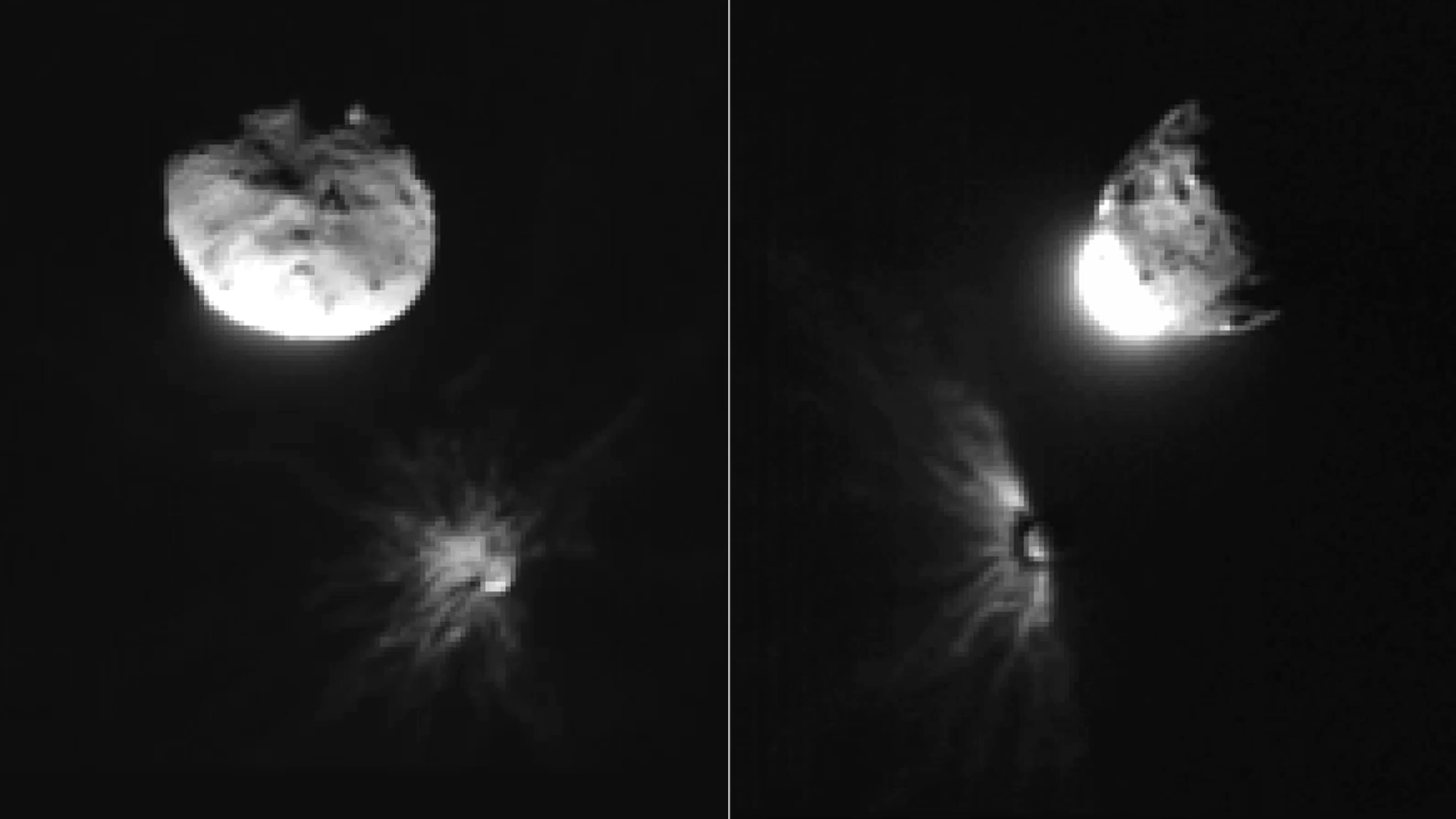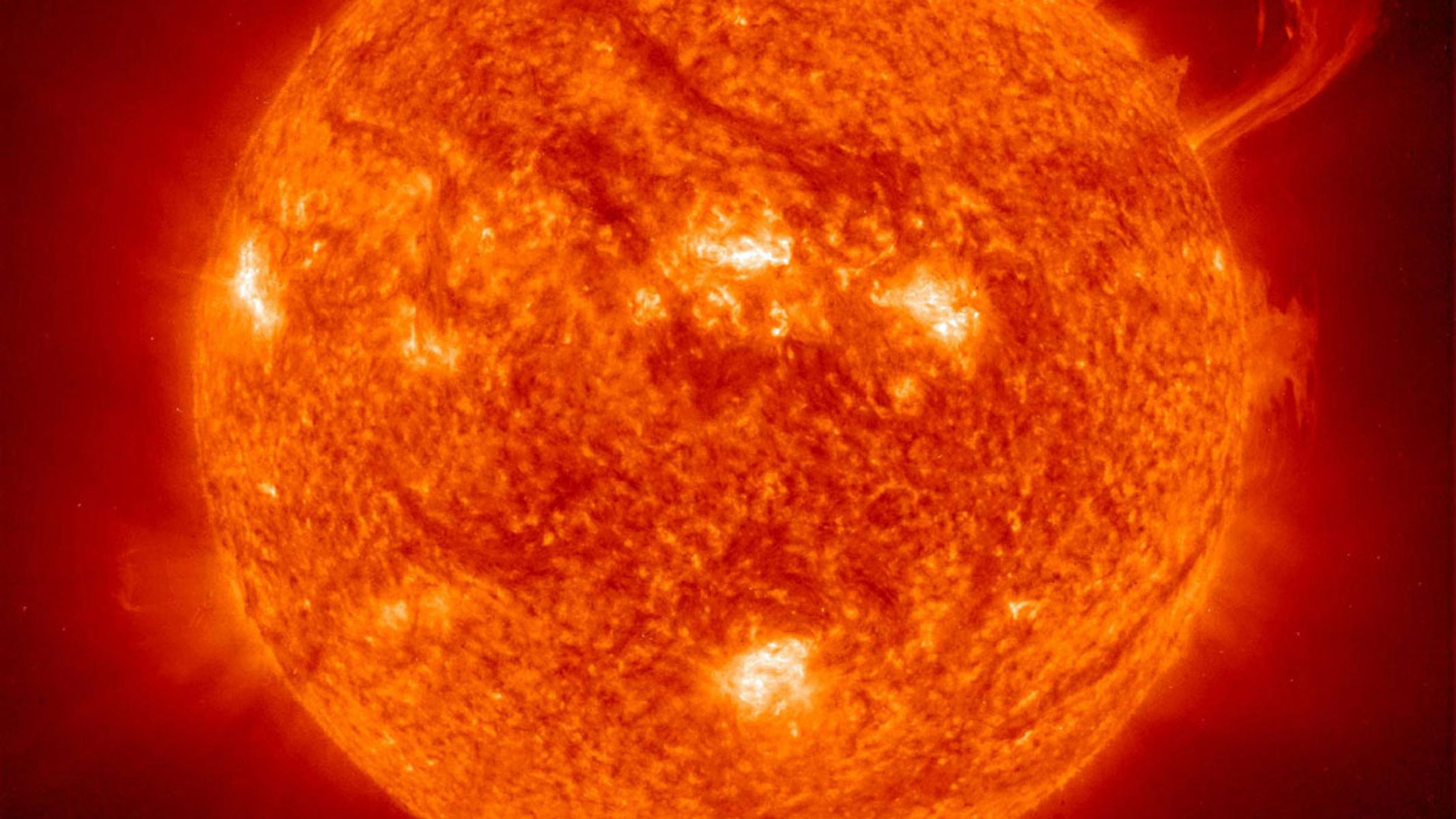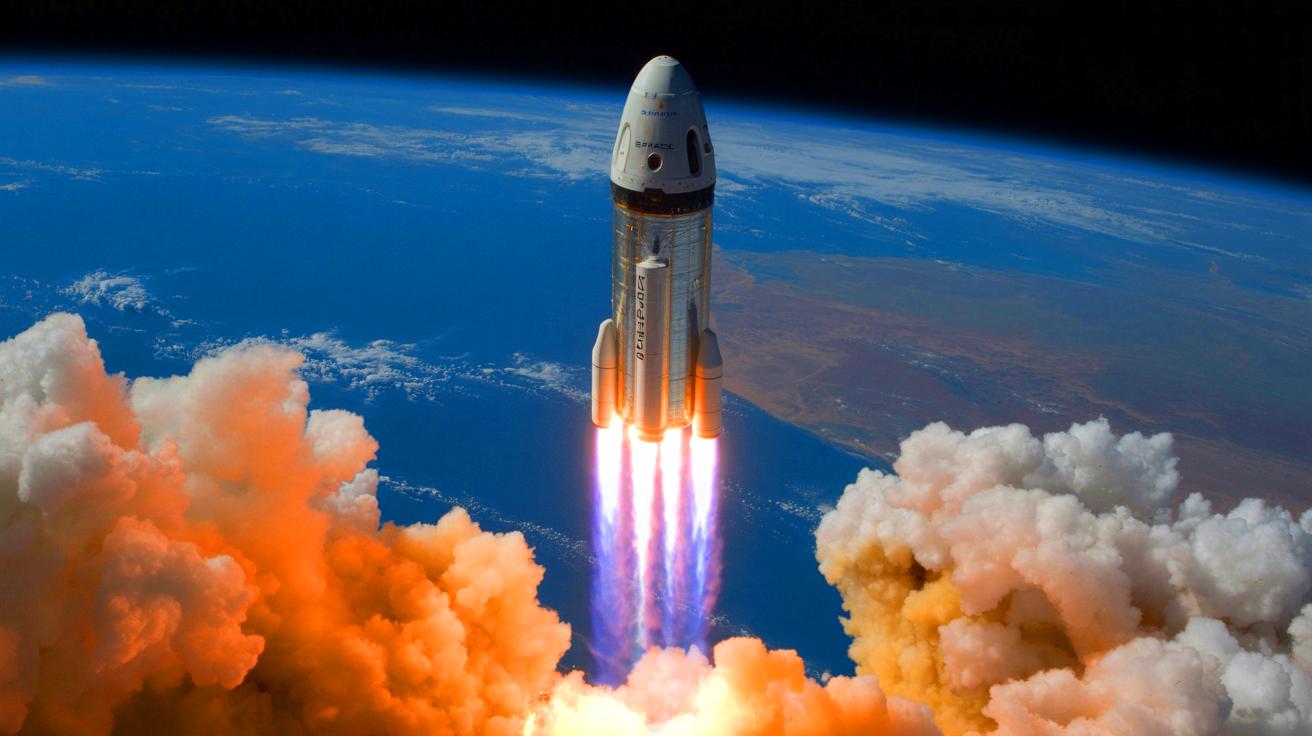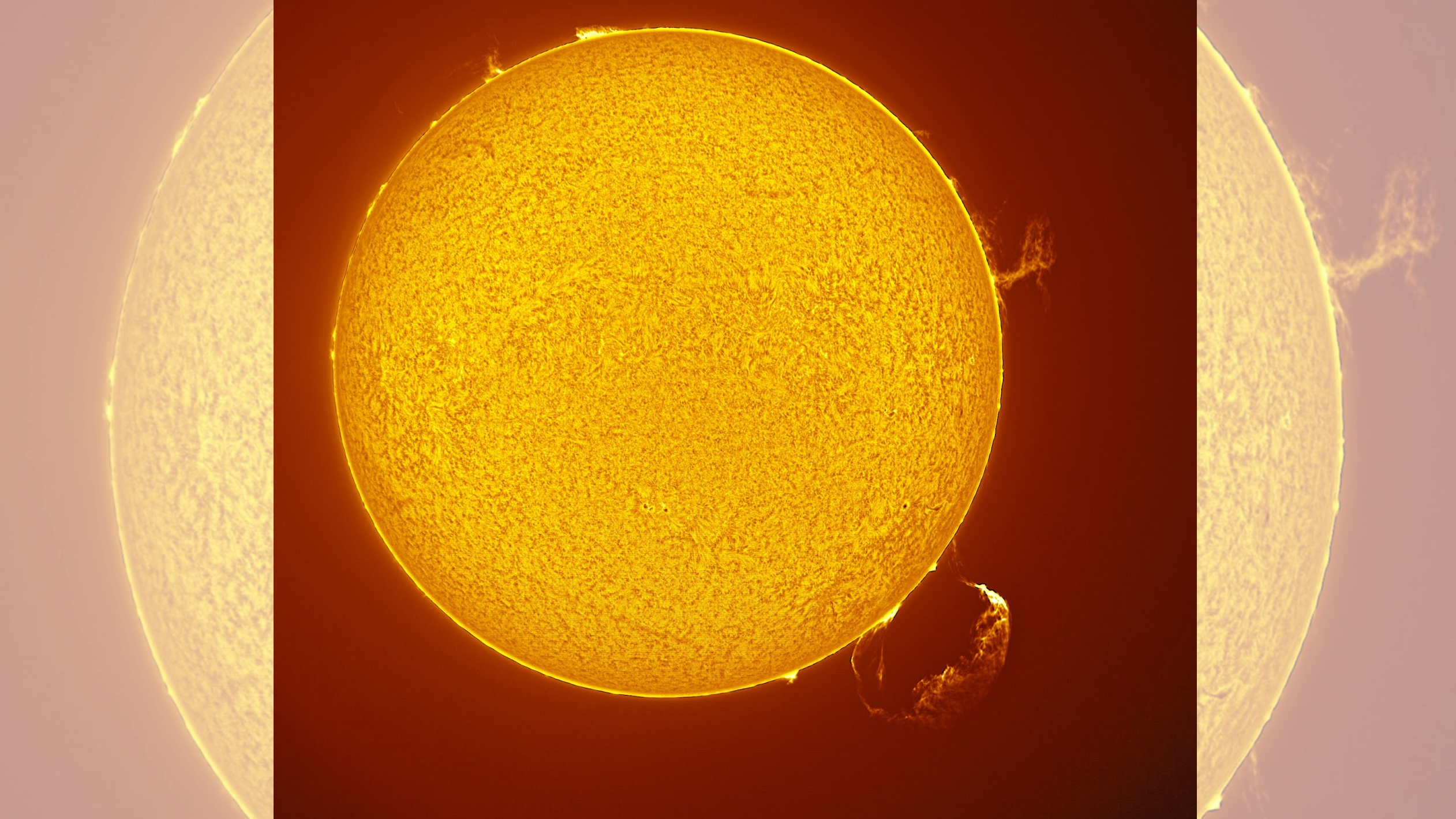People were getting high and hallucinating from smoking this psychoactive plant 2,700 years ago - Earth.com
8/23/25 at 7:01am

A new analysis of burners found in Qurayyah reveals that 2,700 years ago, smoke from Peganum harmala was inhaled.
Viewed by
You are the first to view
Astronomers found a tiny moon orbiting Uranus. There are likely more waiting to be spotted - CNN
8/23/25 at 7:01am

Astronomers using the James Webb Space Telescope have found an unknown moon orbiting Uranus, bringing the planet’s total to 29 — and more likely remain undiscovered.
Viewed by
You are the first to view

Researchers at Durham and collaborators in the Dark Energy Spectroscopic Instrument (DESI) mission have proposed a bold new theory that black holes could be converting matter into dark energy.
Viewed by
You are the first to view

"This explosion gave off more energy in a few seconds than the sun will over its entire life."
Viewed by
You are the first to view
Mystery hominin skull discovered in 1960 dated to at least 286,000 years old - Archaeology News Online Magazine
8/23/25 at 7:01am

New study dates the Petralona skull up to 539,000 years old, offering fresh insight into Europe’s human evolution mystery.
Viewed by
You are the first to view
Close-Up Views of NASA’s DART Impact to Inform Planetary Defense - NASA Science (.gov)
8/23/25 at 7:01am

On Sept. 11, 2022, engineers at a flight control center in Turin, Italy, sent a radio signal into deep space. Its destination was NASA’s DART (Double Asteroid
Viewed by
You are the first to view
Reining in the sun: Venus, Earth and Jupiter may work together to reduce the risk of extreme solar storms - Space
8/23/25 at 7:01am

"We consider this phenomenon as a promising candidate to explain the fact that the solar activity is much more benign than that of other sun-like stars."
Viewed by
You are the first to view
SpaceX Dragon Capsule Delivers 6,700 Lbs of Futuristic Robots From Space Mission That Sparks Global Debate Over Humanity’s Technological Limits - Rude Baguette
8/23/25 at 7:01am

IN A NUTSHELL 🚀 SpaceX’s Dragon capsule returned with 6,700 pounds of advanced equipment from the ISS. 🔬 The MISSE-20 project tested material durability in space for future spacecraft design. 🤖 The Astrobee-REACCH system showcased robotic advancements for …
Viewed by
You are the first to view
What happened before the Big Bang? Computational method may provide answers - Phys.org
8/23/25 at 7:01am

We're often told it is "unscientific" or "meaningless" to ask what happened before the Big Bang. But a new paper by FQxI cosmologist Eugene Lim, of King's College London, UK, and astrophysicists Katy Clough, of Queen Mary University of London, UK, and Josu Au…
Viewed by
You are the first to view
Curiosity rover images 3 intersecting Mars ridges photo of the day for Aug. 21, 2025 - Space
8/23/25 at 7:01am

As part of its exploration of Mars's boxwork landscape, Curiosity found itself in a fork-in-the-road
Viewed by
You are the first to view

China has rolled out a chatbot on its Tiangong space station. Its mission: to improve safety, navigation, and coordination in orbit.
Viewed by
You are the first to view
NASA’s Satellite Spots Bizarre Swirling Holes Over Isolated Island Near Antarctica - The Daily Galaxy
8/23/25 at 7:01am

NASA satellites captured eerie dark swirls slicing through dense cloud cover above a remote island near Antarctica.
Viewed by
You are the first to view
ULA making new efforts on Vulcan reusability - SpaceNews
8/23/25 at 7:01am

ULA is leaning more into reusability as it advances work on recovering the engine section of the Vulcan rocket and embarks on another project.
Viewed by
You are the first to view
A partial solar eclipse is coming: 1 month until the moon takes a 'bite' out of the sun - Space
8/23/25 at 7:01am

A deep partial solar eclipse will grace the Southern Hemisphere on Sept. 21, 2025, with the best views from remote seas and New Zealand's dawn skies.
Viewed by
You are the first to view

See what the Psyche orbiter has been up to.
Viewed by
You are the first to view
'Rosetta stone' of code allows scientists to run core quantum computing operations - Phys.org
8/23/25 at 7:01am

To build a large-scale quantum computer that works, scientists and engineers need to overcome the spontaneous errors that quantum bits, or qubits, create as they operate.
Viewed by
You are the first to view

There's not much to see tonight.
Viewed by
You are the first to view

After more than 30 years, physicists in Finland have uncovered the heaviest nucleus ever seen to emit a proton, a rare process that sheds light on the limits of atomic matter. The discovery of 188-astatine — an oddly “watermelon-shaped” nucleus — not only set…
Viewed by
You are the first to view
Antarctic ice loss could have 'catastrophic' impact - dw.com
8/23/25 at 7:01am

A study warned that Antarctic ice loss could cause more warming in the region and beyond, and could push some marine species toward extinction.
Viewed by
You are the first to view
Mind-blowing simulation showing the speed of Voyager 1 at ground level leaves people shocked - supercarblondie.com
8/23/25 at 7:01am

The Voyager 1 satellite was launched in 1977 to explore the furthermost regions of outer space - but the speed it would travel at on Earth is terrifying
Viewed by
You are the first to view
Ozone will warm planet more than first thought, study finds - Phys.org
8/23/25 at 7:01am

The world will warm more than expected due to future changes in ozone, which protects the Earth from harmful sun rays but also traps heat as it is a greenhouse gas.
Viewed by
You are the first to view

As carbon dioxide continues to rise in Earth's upper atmosphere, the way solar storms interact with it may shift dramatically. New modeling suggests that future geomagnetic storms will occur in a colder, thinner atmosphere, causing a sharper spike in density …
Viewed by
You are the first to view
Jaw-dropping photo captures solar tornado and gigantic plasma eruption raging on the sun at the same time - Live Science
8/23/25 at 7:01am

There's a giant solar tornado raging on the sun's surface, and a researcher captured it — plus a massive plasma eruption — in one spectacular image.
Viewed by
You are the first to view

An experimental method is used to assign partial charges based on crystal structure determination through electron diffraction, applicable to any crystalline compound.
Viewed by
You are the first to view
Scientists program cells to create biological qubit in multidisciplinary research - Phys.org
8/23/25 at 7:01am

At first glance, biology and quantum technology seem incompatible. Living systems operate in warm, noisy environments full of constant motion, while quantum technology typically requires extreme isolation and temperatures near absolute zero to function.
Viewed by
You are the first to view